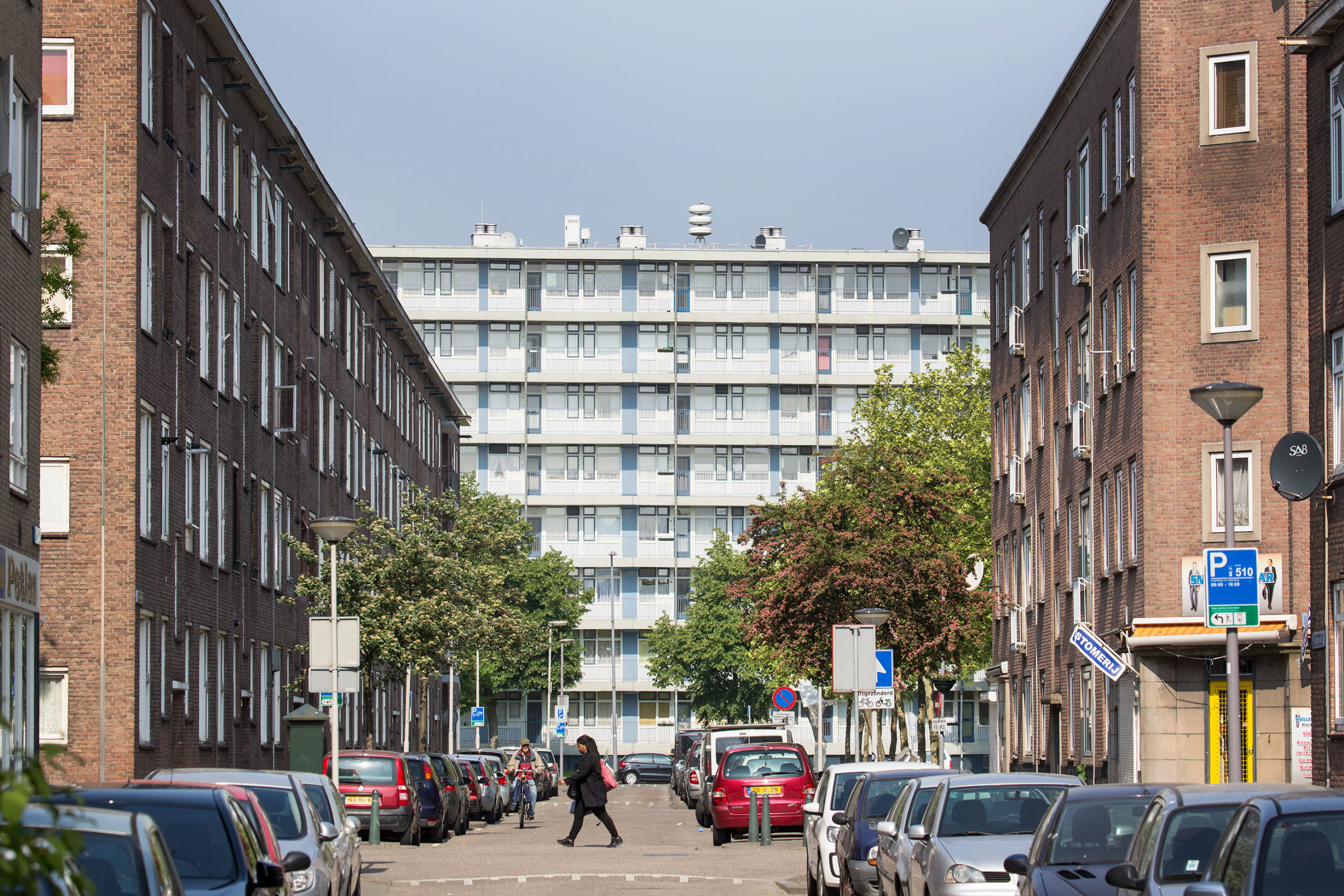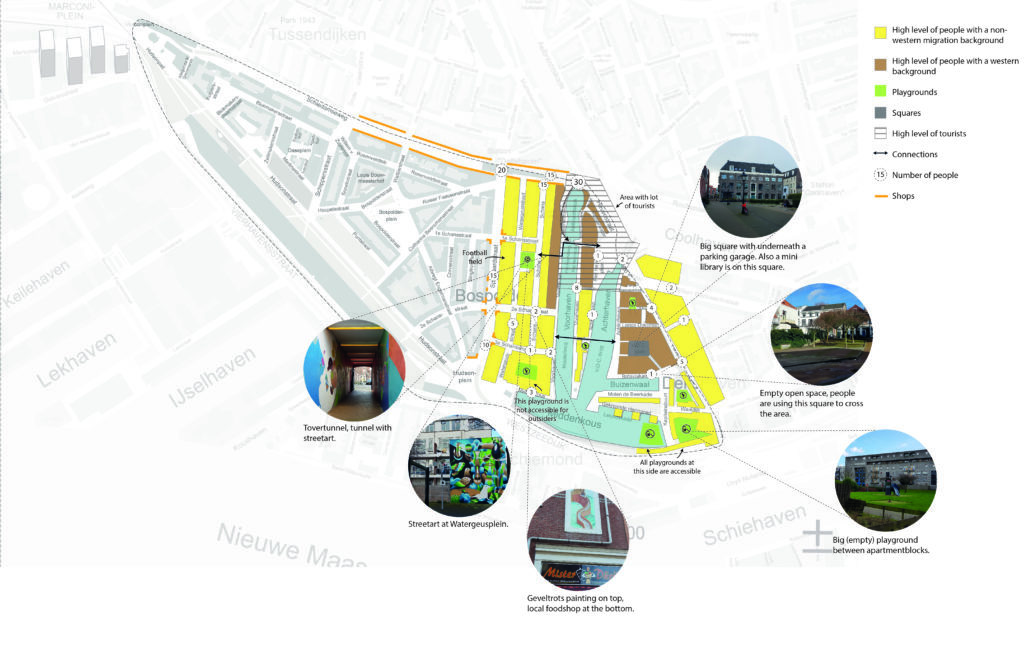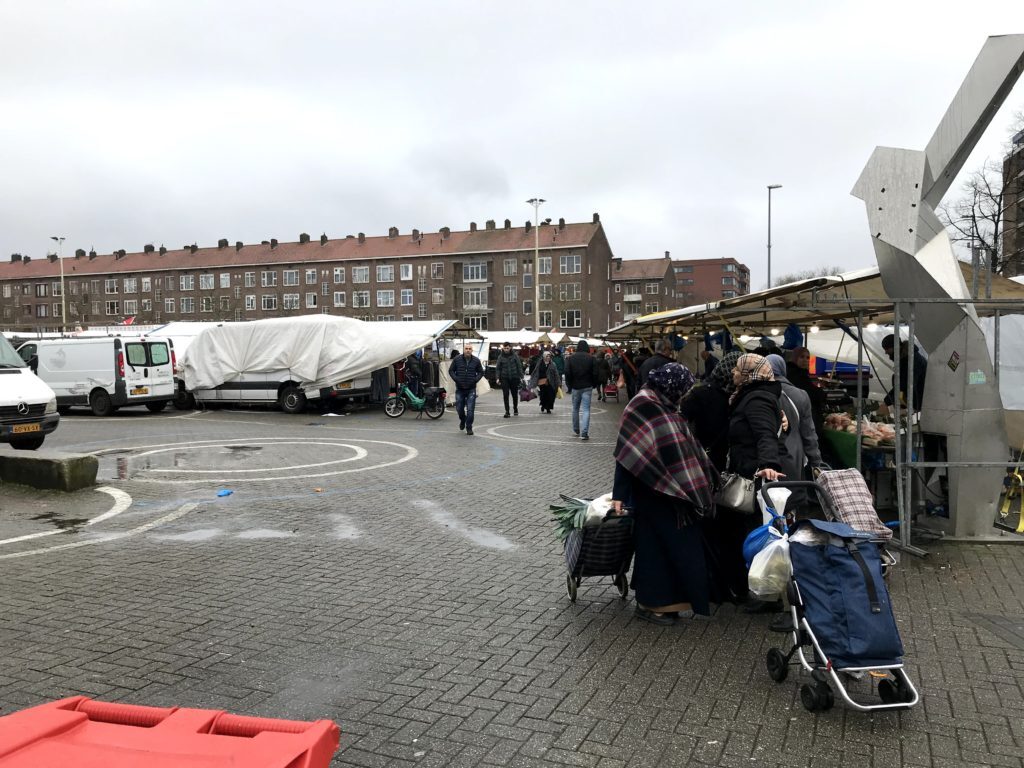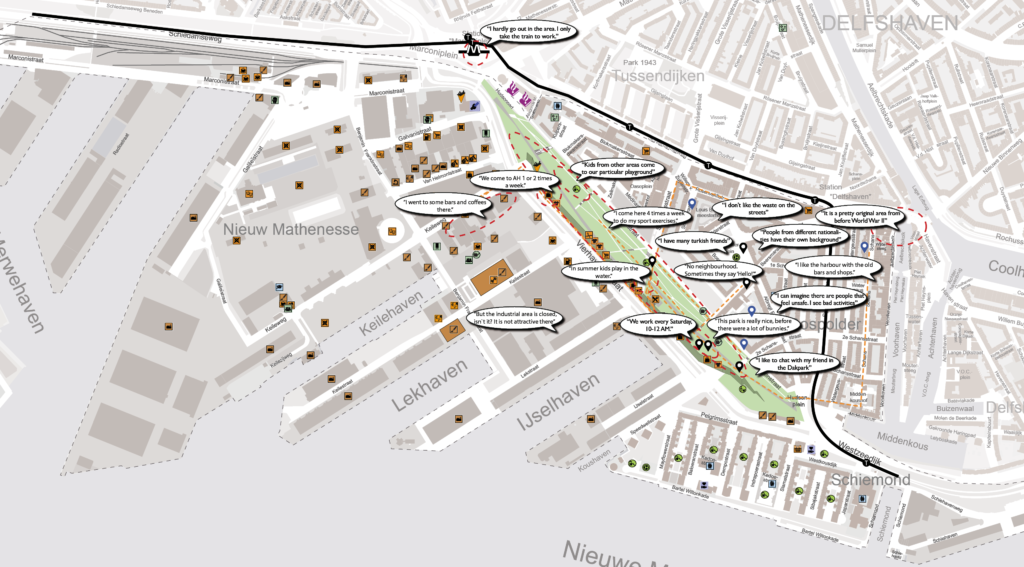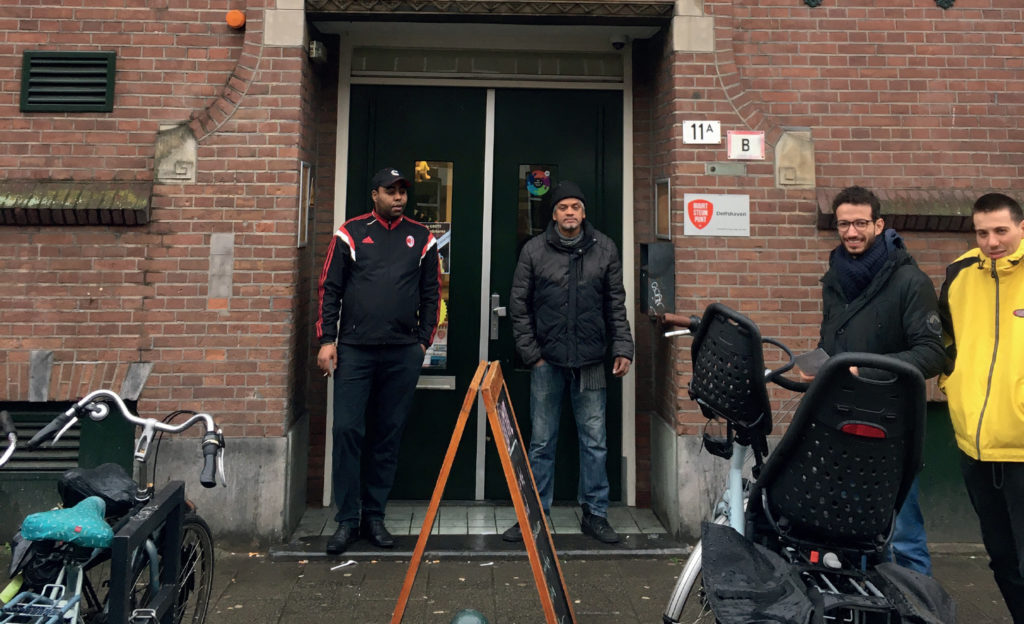Bospolder-Tussendijken (BoTu)
An exploratory study into the areas in and around Bospolder-Tussendijken and the feeling of Inclusiveness of the Neighbourhoods & transcending effect of the Living Environment.
Welcom to our website! Here you can find the research that has been done in the neighbourhoods of Bospolder and Tussendijken in relation with the feeling of inclusiveness amongst the residents living in the neighbourhoods and the transcending effect of the Living Envornment. Students went to the street to actually “Get in touch with the Neighbourhoud” of Bo-Tu. The findings they made during the research periode had been documented below. All the research that has been done got some kind of relation with the overarching theme of encounters.
1 Superposition – Encounters
Overarching research into kind of encounters which take place per research theme. Is it a encounter which happen inside or outside, and does it take place actively or passively? A research of what effect it has on the inclusiveness of neighbourhoods and what role the living environment plays in that.
2 Nieuwe Westen – Public Organization
This group did research into the Public Organizations located in the Nieuwe Westen. Three of these organizations are determined: wmo radar, Buurt Steunpunt & Pameijer. All of these places take place inside, but have both active and passive encounters.
3 Delfshaven – Identity & Connection
The feeling of Identity & Connection in a city will strengthen the feeling of inclusiveness. This group did research into what extent these overall passive encounters take part in the feeling of belonging and togetherness.
4 M4H and Schiemond – Neighbourhood Initiatives
In public places a lot of encounters take place. Different types of these public (meeting) places are assessed. All these places will end finally into encounters: sometimes planned (active), sometimes unplanned (passive) but also sometimes a consequence of a passive encounter leads into an active social encounter.
5 Bospolder and tussendijken – Social interactions while Shopping
In general, the main reason for going to a grocery store or market is to buy food. Encounters are mostly passive. Sometimes it is also a way of meeting with people and there is an active agreement to go shopping together. Also there is a big part of these encounters which take place which could not been seen as exclusively active or passive, but more like being “expected”. The intention was not to there meet, but it could certainly be expected.
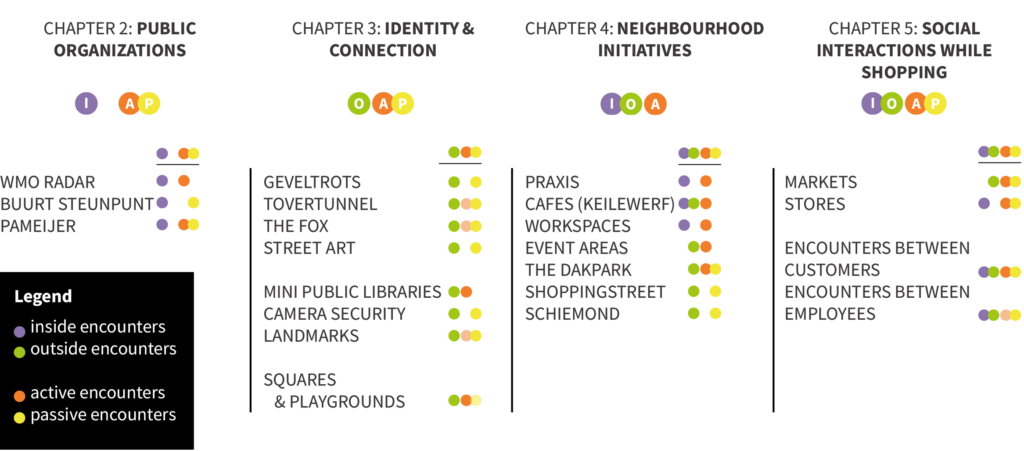
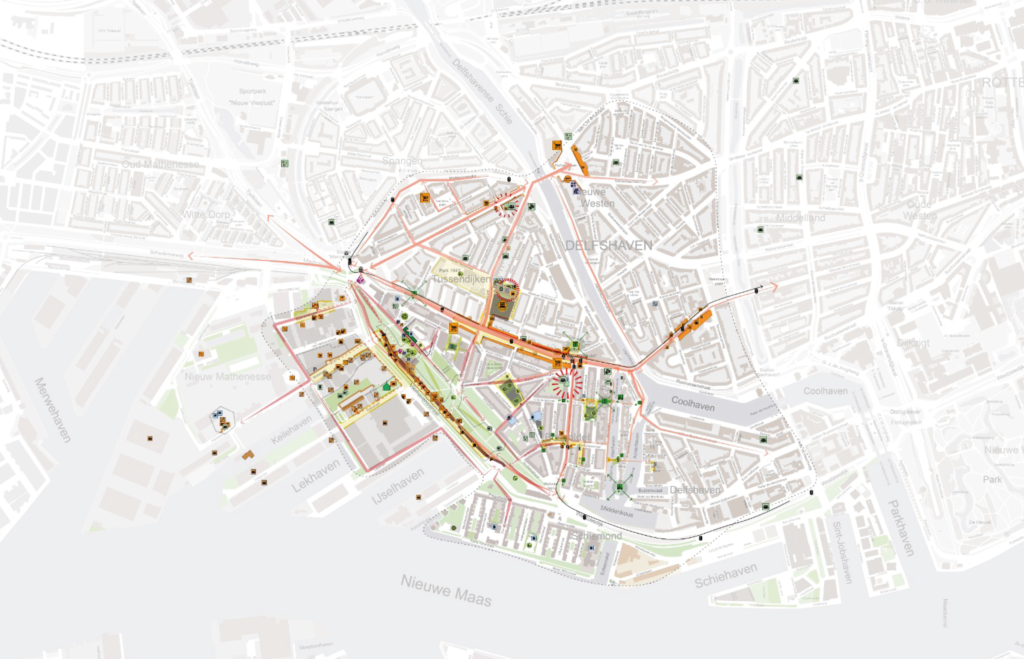
“What is the contribution of active or passive encounters in relation to the sense of inclusiveness of the neighborhoods of Bospolder & Tussendijken? Until what extent does meeting in- or outside have an influence on that?”
overarching research question
Important findings in the comparison between different themes in relation to the main question:
Public Organizations <> Identity & Connection
It seems that passive encounters are more common to happen outside, while for encounters inside it doesn’t seem to matter being active or passive.
Public Organizations <> Neighbourhood Initiatives
When there is done research into many (divergent) topics it seems logical that a lot of encounters take place. Besides this large number, the chance of both active and passive encounters is high.
Public Organizations <> Social Interactions while Shopping
Both of the researched objects or locations had not the intention to be an active encounter. But a lot of these passive encounters can yet lead into active encounters.
Identity & Connection <> Neighbourhood Initiatives.
The (corresponding) results of these two studies for chapter 3 are that these mainly passive encounters outside contribute to the sense of belonging and togetherness, compared to the social encounters that chapter 4 established, which also seem to contribute to mutual relationships between the residents or users of these facilities.
Identity & Connection <> Social Interactions while Shopping
Being into a passive encounter with having a common goal as others which are at the same location, active encounters rather also unexpectedly take place. While visiting objects or places with divergent intentions, doesn’t lead into that much of unexpected active encounters.
Neighbourhood Initiatives <> Social Interactions while Shopping
Having a purpose of going somewhere could also lead into unplanned but yet expected encounters.
THE ANSWER
It cannot be concluded that active or passive encounters ultimately contribute more or less to the sense of inclusiveness. It is assumed that active encounters contribute more than passive encounters.
Difference in the kind of encounters inside against outside could lay in the fact that inside spaces are mostly smaller, and therefore residents or users of these insides spaces are closer to each other and more likely to have some kind of a meeting with each other.
There is a really big importance of having a similar purpose of going somewhere. This research has shown that this contributes greatly to unexpected active encounters.This takes a huge part into the contribution of social relations, which will lead to the feeling of inclusiveness for the residents.
Subgroups divided in area or theme:
